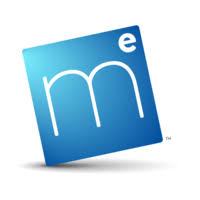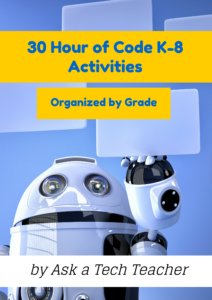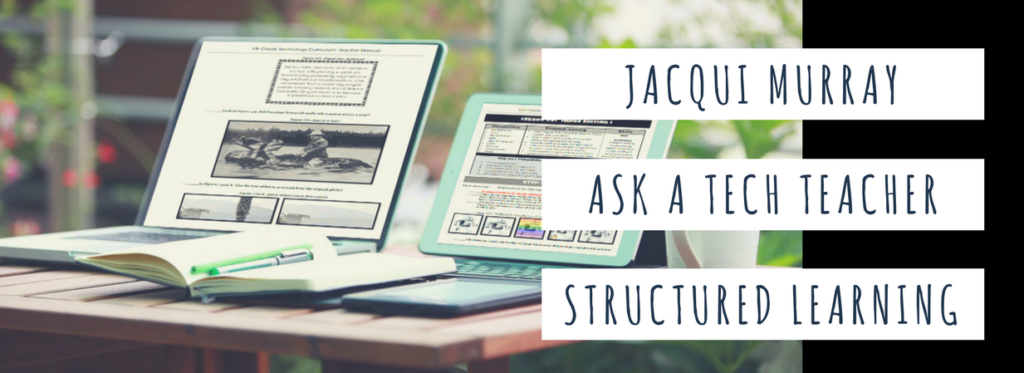Year: 2018
A Thanksgiving Poll for Students–What does ‘Turkey’ mean?
 Last year, I did a poll on the meaning of the word ‘turkey’. This was to demonstrate how powerful symbols are to your students and do so with an authentic use of technology to support discussion on math, language standards, and the holidays.
Last year, I did a poll on the meaning of the word ‘turkey’. This was to demonstrate how powerful symbols are to your students and do so with an authentic use of technology to support discussion on math, language standards, and the holidays.
As a summation to your discussion with students on symbols, idiomatic expressions, geography, farms, or another topic, post this on your Smartscreen. The poll includes lots of definitions for the word ‘turkey’. Have each student come up sometime during the day (or class) and make their choices.
What definitions did your students come up with I didn’t list?
Share this:
16 Thanksgiving Sites, 2 Apps, and 2 Projects
 Need a few websites and apps to fill in sponge time? Here are Thanksgiving websites that will keep students busy and still teach them:
Need a few websites and apps to fill in sponge time? Here are Thanksgiving websites that will keep students busy and still teach them:
- Canadian Thanksgiving
- Online/Offline Thanksgiving activities
- Plimoth Plantation
- Starfall–Silly Turkey
- Thanksgiving edu-websites–CybraryMan
- Thanksgiving Games
- Thanksgiving games and puzzles
- Thanksgiving games–Quia
- Thanksgiving information–history, more
- Thanksgiving Jigsaw
- Thanksgiving Jigsaw II
- Thanksgiving Lesson Plans
- Thanksgiving Tic-tac-toe
- Thanksgiving video–Brainpop
- Thanksgiving Wordsearch
- The First Thanksgiving
Share this:
Thanksgiving Activities That Keep You in Charge of Learning
 Teaching the days before big holidays is challenging. Students and teachers alike are ready for a break. Both struggle to pay attention regardless of how innovative and engaging are the lesson plans.
Teaching the days before big holidays is challenging. Students and teachers alike are ready for a break. Both struggle to pay attention regardless of how innovative and engaging are the lesson plans.
I’ve been there often. As a result, I’ve come up with fun ways to support learning while students power through the last few days of school. Here are seven I use during the pre-Thanksgiving season:
ASCII Art
Time required: Less than one class
ASCII Art is the graphic design technique of creating images by typing the letters, numbers, and symbols defined by ASCII Standards. Holiday examples include this Thanksgiving pumpkin and these holiday bells. Here’s how you do it:
- Open your word processing program (MS Word, Google Docs, or another).
- Add a watermark of a picture you’d like to use, preferably a single image rather than one that includes a background. Silhouettes are perfect for this sort of project.
- Type over the image with the letters, symbols, and numbers that best fit the outline. It’s fine to use one letter throughout (like an X).
- Add color by highlighting the letters, numbers, and symbols typed over the parts you’d like colored (such as the stem of a pumpkin or the bow on Christmas bells in the linked samples above).
- When you’ve covered the image with characters, delete the watermark. That leaves just your typing.
- Save, print, share, publish as is customary in your classes.
Tie-ins: Use this not only for holidays but any academic class by creating an artistic image of the topic being discussed. Click the link for an example of Abraham Lincoln to align with study of the American Civil War or this one of the American Revolution. This is also a fun and authentic way for students to practice keyboarding.
Share this:
Book Review: Repositioning Educational Leadership
 Repositioning Educational Leadership
Repositioning Educational Leadership
by James Lytle et al
4/5
The idea of using inquiry to drive change is both inspired common sense and not entirely obvious. That’s why when I heard about Repositioning Educational Leadership: Practitioners Leading from an Inquiry Stance (Teachers College Press 2018), I was thrilled to read it. Teachers are familiar with the inquiry classroom but it doesn’t always filter up to administrators.
“…educational leadership for k12 schools is increasingly complicated, as demands on educational leaders and schools continue to escalate.”
“Leaders need opportunities to learn from the ‘inside’ of other leaders’ experiences, doubts, and all. This volume addresses that need.”
The authors, James Lytle, Susan Lytle, and Michael Johanek, collected evidence from school leadership who used inquiry to solve recalcitrant problems in their schools. The result is this book with a simple rationale: Education leaders must position themselves as inquirers. They must lead from an inquiry stance.
The book is organized into three sections: Learning from and with Students, Collaborating with Teachers and the School Community, and Leading System-level Inquiry. Each chapter within the theme is written by a school leader and shares their story of how leading with inquiry solved a problem they faced. These range from struggling to serve diverse groups of students to addressing where the usual education practices were failing. I found all of them interesting and instructive, each resonating with some aspect of my own experience. In all of these, solutions included the application of inquiry–talking to students, to faculty, to groups, to parents. And listening.
Share this:
Measuring Up–the Key to Meeting State/National Standards
 Last year, only 61 percent of high school students who took the ACT English achievement test were deemed college-ready. In math, it was 41 percent. We teachers recognize it is our fiduciary responsibility to fulfill state and national education standards that prepare students for college or career. Many of us find students benefit greatly when the school employs curriculum-based assessments to measure progress. Why? Because by teaching, assessing knowledge, tracking progress, and personalizing to student needs, we can determine if students are accomplishing what they must to complete the work of learning.
Last year, only 61 percent of high school students who took the ACT English achievement test were deemed college-ready. In math, it was 41 percent. We teachers recognize it is our fiduciary responsibility to fulfill state and national education standards that prepare students for college or career. Many of us find students benefit greatly when the school employs curriculum-based assessments to measure progress. Why? Because by teaching, assessing knowledge, tracking progress, and personalizing to student needs, we can determine if students are accomplishing what they must to complete the work of learning.
Unfortunately, most textbooks offer no easy way to measure overall progress toward completing state or national standards, nor do they backfill for a lack of knowledge. Both of these are critical pieces to the successful accomplishment of learning goals.
This is where Mastery Education’s Measuring Up can help.
What is Measuring Up?
Measuring Up is a suite of tools that supplements any classroom curriculum by offering standards-based instruction, practice, assessment, and reporting customized to many state or national standards–with the singular goal of assisting students in meeting English Language Arts, Mathematics, and/or Science standards.
Share this:
Subscriber Special: November
November 1st-8th:
Buy the K-8 curriculum; get the 55-page Hour of Code bundle for free
What’s in the Hour of Code bundle?
 30 K-8 coding activities, organized by grade
30 K-8 coding activities, organized by grade
138 images
aligned with ISTE and Common Core
lots of options to differentiate for student needs
Questions? Ask Jacqui Murray at askatechteacher at gmail dot com.
Share this:
Here’s a Preview of November
 November is a short month, with a week off to celebrate the holiday. Here’s a preview of what’s coming up on Ask a Tech Teacher:
November is a short month, with a week off to celebrate the holiday. Here’s a preview of what’s coming up on Ask a Tech Teacher:
- Book Review: Repositioning Educational Leadership
- Hour of Code activities
- Let’s talk about Measuring Up–from Mastery Education
- Thanksgiving Activities That Keep You in Charge of Learning
- The Power of Symbols–What does ‘Turkey’ mean?
Jacqui Murray has been teaching K-18 technology for 30 years. She is the editor/author of over a hundred tech ed resources including a K-8 technology curriculum, K-8 keyboard curriculum, K-8 Digital Citizenship curriculum. She is an adjunct professor in tech ed, a Master Teacher, webmaster for four blogs, an Amazon Vine Voice reviewer, CAEP reviewer, CSTA presentation reviewer, freelance journalist on tech ed topics, and contributor to NEA Today and TeachHUB. You can find her resources at Structured Learning. Read Jacqui’s tech thriller series, Rowe-Delamagente.
Share this:
The Impact of VR on Student Education
Virtual Reality–VR–is the 2018 buzzword among students, teachers, and even parents. And rightfully deserved, VR has the ability to recreate so many of the rules that used to shape education. Ask a Tech Teacher contributor, Sara Stringer, shares her opinion on the key factors that could affect the importance of VR to education:
Opinion: How VR Will Impact Student Education
Virtual reality (VR) is an exciting new concept that continues to shape how users see the world around them. It’s one of the few technologies that inspires students who have never known life without smartphones and the internet.
The learning potential of VR is incredible. It offers new ways to inspire and engage students and will undoubtedly have a greater presence in education as the technology becomes more available. In particular, students who are enrolled in online charter schools can greatly benefit from these technological advances. However, to really predict the prevalence of virtual reality in the future of education, we have to take a look at three key factors.
Age Usage
One of the things that makes VR so universal is its ease of use for students of all ages.
Younger students—preschool to early elementary—typically learn through experience. Putting them into immersive environments can complement the learning they’re doing at home or in the classroom and extend their understanding of new concepts and ideas. Through VR, they can visit far-off places, see dinosaurs walk the earth, and observe wildlife in their natural habitats.
VR gives students more contextual information to what they’re learning. Reading or watching videos about the tides is one thing; being submerged in the ocean to witness the influence they have on sea life is another. It can also unlock students’ potential and keep them engaged no matter what subject they’re learning. They can gain new perspectives on the people, places, cultures, and subjects they’re studying. More complex subjects, like anatomy, can come to life for older students. Not only can they virtually visit a lab, but they can hold a heart in their hand.
Share this:
Is technology outpacing you?
 In considering the question, Is technology outpacing you?, let’s first look at technology’s place in the current education landscape. True, it is touted as a magic wand that will fix all education woes. Sure, 73% of teachers use cell phones in their classrooms and 92% say the Internet has a “major impact” on their teaching. We gush over new hardware like iPads and Chromebooks. We spend millions on training teachers to blend tech into their lessons. We darkly predict that the day will soon arrive when technology erases the need for teachers.
In considering the question, Is technology outpacing you?, let’s first look at technology’s place in the current education landscape. True, it is touted as a magic wand that will fix all education woes. Sure, 73% of teachers use cell phones in their classrooms and 92% say the Internet has a “major impact” on their teaching. We gush over new hardware like iPads and Chromebooks. We spend millions on training teachers to blend tech into their lessons. We darkly predict that the day will soon arrive when technology erases the need for teachers.
But truthfully, technology is less a magic wand than a unicorn. It will never:
- take over education. Using webtools and burying noses in digital devices won’t provide the interpersonal skills required to succeed in the working world. Any job students get post-school will require listening to real people, responding, and adapting when body language says you’ve confused the person in front of you.
- replace teachers. The human piece to education can’t be overstated. The attention and care provided by a teacher — technology may measure it but can’t provide it.
Current research supports this:
“… among school-related factors, teachers matter most. … good teachers are irreplaceable assets for coaching and mentoring students, addressing the social and emotional factors affecting students’ learning, and providing students with expert feedback on complicated human skills such as critical thinking, creative problem solving, communication, and project management.” — RAND Education
What technology does, and does quite well, is make learning materials more accessible, more equitable, more up to date, and better suited to individuals. And importantly, it automates tedious tasks like roll call and grading so teachers have more time for students.
Share this:
Differentiation Simplified with Study.com
 Study.com is an online distance learning portal that provides over 70,000 lessons in fifteen subjects (including algebra, calculus, chemistry, macro- and microeconomics, and physics) aligned with many popular textbooks. Resources include not only videos but study tools, guides, and more. You can read more detail on my Study.com review here.
Study.com is an online distance learning portal that provides over 70,000 lessons in fifteen subjects (including algebra, calculus, chemistry, macro- and microeconomics, and physics) aligned with many popular textbooks. Resources include not only videos but study tools, guides, and more. You can read more detail on my Study.com review here.
Today, I want to talk about Study.com’s emphasis on differentiated instruction.
When I first discovered Study.com, I was blown away by its unique approach to providing passionate learners with a college education that fit their lifestyle. If you are that person who struggles with traditional campus-based classes, has a full-time demanding job, can’t get to a campus because of transportation issues, lives on a tight budget but still values high-quality education, AND you are committed to earning a college degree, do yourself a favor and visit Study.com’s website. I’ve worked with Study.com in the past and come to realize the high value they place on differentiating instruction and meeting students where they are ready to learn, so when they wanted to share the news of their online class teaching the basics of differentiating in the classroom, they knew I would want to help.
To me and many other educators:
Differentiated instruction is at the core of effective teaching.
What is differentiation?
Differentiated learning can be defined this way:
With differentiated instruction, teachers proactively create options to accommodate a diverse range of learners while keeping the whole class on track. Teachers observe students carefully in order to design experiences that match the learning styles of the class and the differing levels of ability and understanding. —Study.com
You might call it ‘personalized learning’ or even ‘blended learning’ but at its most basic, differentiated learning is teaching in ways that best serve individual students–providing different resources and lesson plans to suit different learning styles. If for you, the term ‘differentiation’ should always be followed with, “Where am I supposed to find the time?“, it’s because too often, differentiation is conflated with the tedium of creating individual lesson plans for each and every student. Me, I’ve never done that. Instead, I offer a variety of media that address the lesson. Students do the work of picking what is best for them and selecting the assessment medium best suited to their communication style be it audio, video, text, visual, music, art, or another.




































